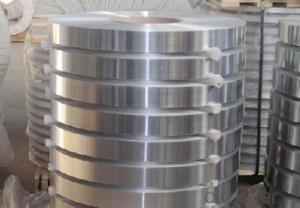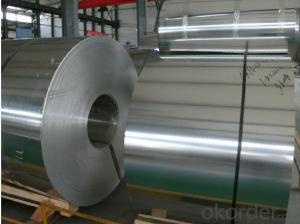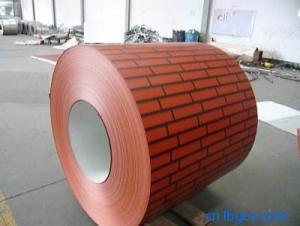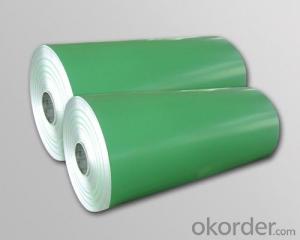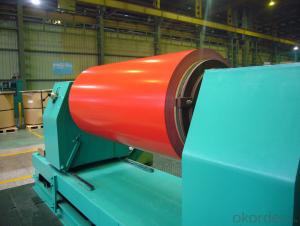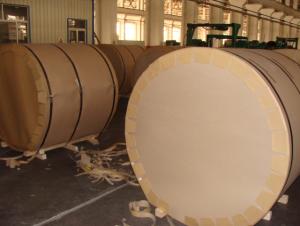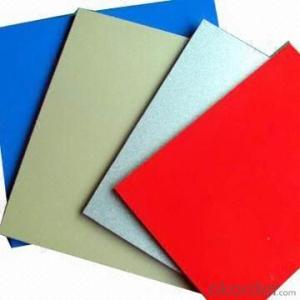Green Aluminum Coil - PVDF Coated Aluminum Coil-AA 8xxx
- Loading Port:
- China Main Port
- Payment Terms:
- TT OR LC
- Min Order Qty:
- -
- Supply Capability:
- -
OKorder Service Pledge
OKorder Financial Service
You Might Also Like
Product Description:
1 Specifications of PVDF Coated Aluminum Coil/Sheet
Alloy | AA1050,AA1060, AA1070, AA1100, AA3003, AA3004, AA3005, AA3105, AA5005, AA5052, AA5754, AA5083, AA8011 |
Temper: | H12, H14, H16, H18, H22, H24, H26, H32,HO, F |
Thickness: | 0.10-4.0mm |
Width: | 10mm- 2000mm |
Coating | PVDF |
Painting Thickness | Standard 16-25 microns, max 40 microns |
Color | Acording to Ral colors or customer’s samples |
Standard: | GB/T17748-1999, ASTM, ISO, EU standard |
Special Specification is available on customer’s requirement | |
PVDF(fluorine-carbon) Coating
PVDF(fluorine-carbon) coating :made of fluorine carbon resin, pigment, ester solvent, after high temperature roasting and baking, the paint is solidified to dry film with super weather resistance. PVDF coating also can be classified as traditional PVDF and nanometer PVDF coating.
A.Traditional PVDF Coating, with KYNAR500 PVDF, two or three times for coating and baking, has good properties of anti-acid, anti-alkali and is durable in atrocious weather and environment, keeping 15 years no unwonted fading. In view of these facts, we recommend this panel applied for external wall cladding.
B.Nanometer PVDF Coating, which different with traditional PVDF is the clear coating. It contains nanometer element, which can protect panel from pollution, Because nanometer has self-cleaning effect, It easy to get rid of dust and pollution by raining or water.
- Q: What happens when you mix Aluminum (or magnesium) with calcium carbonate? Can you write a chemical equation please?
- 2Al + 3CaCO3 = Al2(CO3)3 + 3Ca
- Q: G'day guys, I'm wanting to get the tinnie out but im not looking on spending to much on oars, Aluminum ones are quite cheap i can pick some up for $50, but i was just wondering if there any good? anyone had good or bad experience with them? and would it just be worth forking out extra for wooden ones?
- Cheap Oars
- Q: How are aluminum coils tested for surface cleanliness?
- Aluminum coils are typically tested for surface cleanliness using various methods such as visual inspection, solvent wipe tests, and surface roughness measurements. Visual inspection involves examining the surface of the coil for any visible contaminants or defects. Solvent wipe tests involve wiping the surface with a solvent-soaked cloth to check for any residue or contaminants that may be present. Surface roughness measurements are taken using specialized instruments to assess the smoothness of the coil's surface, which can indirectly indicate its cleanliness. These testing methods help ensure that aluminum coils meet the required standards and are free from any surface contaminants.
- Q: Just wondering if an aluminum and Fluoride bond can be created by boiling fluoridated water in aluminum cookware?
- It could be.....but the amount of fluoride in tap water is 1.2ppm, so even if you do, it won't have any effect :)
- Q: What are the different ACP (Aluminum Composite Panel) applications for aluminum coils?
- Some of the different applications for aluminum coils in Aluminum Composite Panels (ACP) include building facades, signage, interior decoration, cladding, and insulation. The versatility and durability of ACP make it suitable for a wide range of architectural and construction projects.
- Q: Can aluminum coils be used for radiation shielding?
- Yes, aluminum coils can be used for radiation shielding. Aluminum is a commonly used material for radiation shielding due to its high atomic number and density, making it effective at absorbing and scattering radiation. Aluminum can effectively shield against a wide range of radiation types, including gamma rays and X-rays. Additionally, aluminum is a lightweight and malleable material, making it easy to work with and suitable for various applications where radiation shielding is required, such as in medical imaging, nuclear power plants, and aerospace industries.
- Q: What are the common handling and storage practices for aluminum coils?
- To maintain the integrity and prevent damage or degradation of aluminum coils, several key steps should be taken: 1. Minimize physical damage: Handle and store aluminum coils carefully to reduce the risk of physical harm. This involves using appropriate lifting equipment to avoid dropping or mishandling the coils. Additionally, store them in a secure location away from potential hazards like heavy machinery or sharp objects. 2. Ensure proper stacking and support: When stacking aluminum coils, evenly distribute the weight and avoid overloading. Uneven support or excessive weight can cause deformation or collapse. It is advisable to use suitable stacking equipment and supports, such as pallets or racks, to maintain the coils' integrity. 3. Protect against moisture and corrosion: Aluminum is prone to corrosion, especially in the presence of moisture. Thus, it is crucial to store the coils in a dry environment to prevent rust or other forms of corrosion. Shield the coils from rain, snow, or excessive humidity by storing them in a covered area or inside a warehouse. Additionally, wrapping the coils in moisture-resistant packaging, like plastic, offers an extra layer of defense. 4. Control temperature: Extreme temperatures can affect the quality and performance of aluminum coils. To prevent adverse effects, store them in a temperature-controlled environment. High temperatures can cause expansion or distortion, while extreme cold can make them brittle and prone to cracking. Maintaining a stable temperature within the recommended range ensures the longevity and usability of the coils. 5. Follow guidelines: It is vital to adhere to any specific handling and storage guidelines provided by the manufacturer or supplier. These guidelines may include recommendations on stacking height, weight limits, and necessary precautions to prevent damage or deformation. By following these guidelines, the quality and usability of the coils can be maintained. By implementing these common practices, the protection, integrity, and optimal performance of aluminum coils can be ensured throughout their lifespan.
- Q: This question asks for the method to measure the dimensions of an aluminum coil.
- <p>To measure the size of an aluminum coil, you'll need to measure its diameter, width, and thickness. Use a tape measure or a caliper to measure the coil's diameter and width. For the thickness, a micrometer or a coil thickness gauge can be used. Ensure the coil is laid flat and measure at several points to get an average thickness. If the coil is wound, you may need to unroll it partially to take accurate measurements. Always follow the manufacturer's guidelines for your specific measuring tools to ensure accuracy.</p>
- Q: Is there aluminum coil of 44mm wide and 0.40mm thick?
- The common width of aluminum coil is 1000mm or 1220mm. If you want 0.4mm*1000MM aluminum coil, you can strip 0.4mm*1000MM aluminum coil.
- Q: Can aluminum coils be used for solar panel applications?
- Yes, aluminum coils can be used for solar panel applications. They are often utilized as the base material for solar panels due to their lightweight, corrosion-resistant, and durable properties. Additionally, aluminum coils offer good thermal conductivity, enabling efficient heat dissipation in solar panels.
Send your message to us
Green Aluminum Coil - PVDF Coated Aluminum Coil-AA 8xxx
- Loading Port:
- China Main Port
- Payment Terms:
- TT OR LC
- Min Order Qty:
- -
- Supply Capability:
- -
OKorder Service Pledge
OKorder Financial Service
Similar products
Hot products
Hot Searches
Related keywords









